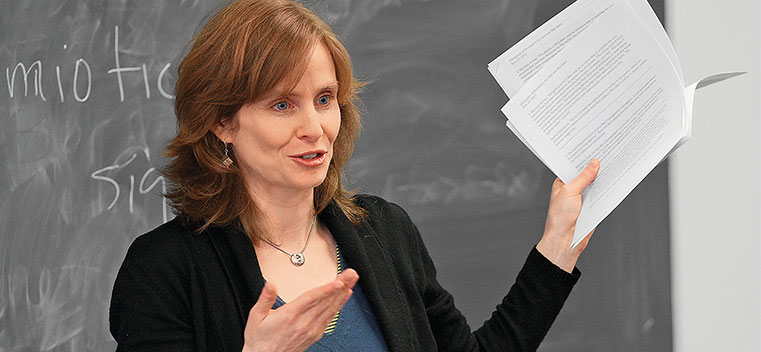
Putting Reconstruction on the Map
Read more on Masur and Downs' work with the National Park Service.
Tell us what you think. E-mail comments or questions to the editors at letters@northwestern.edu.
Find Us on Social Media
Northwestern professor, alumnus collaborate on National Park Service study of post–Civil War era.
In April the United States celebrated the 150th anniversary of the end of the Civil War with speeches and historical re-enactments. But at the end of it all, most people didn’t give much thought to the important period that followed the war: the Reconstruction Era.
Though the rebuilding of the nation has had lasting effects, Reconstruction’s conspicuous absence from the public conscience came as no surprise to Northwestern history professor Kate Masur. Because of its many complexities, the era that she has spent most of her career studying often gets glossed over.
“Most people want to just tie up the end of the Civil War in a nice little bow — Grant and Lee at Appomattox — and just move on,” Masur says. But that’s about to change. Masur and Gregory Downs ’02 MA, an associate professor of history at the University of California, Davis, are collaborating with the National Park Service to raise public awareness of the complicated period and spark nationwide discussion.
“Though the Park Service has a big investment in the Civil War, they have never really done Reconstruction,” says Masur, who is working with Downs on a comprehensive study of Reconstruction landmarks. They’re hoping their work will help the Park Service tell the Reconstruction story at relevant existing sites, such as Civil War battlefields, and that it will also lead to the designation of new sites concerned primarily with Reconstruction. Masur and Downs also helped the Park Service create a brochure explaining the period, which will go on sale in the parks later this year.
One of the biggest issues Masur faces in explaining Reconstruction is overcoming the “inaccurate portrayal” of the period that was long taught in schools both north and south of the Mason-Dixon Line, “an interpretation that was actually created to support white supremacy,” she says. This false narrative depicted an overreaching federal government that oppressed white Southerners and sowed chaos by enfranchising African American men. On the contrary, Masur says, historians now view the period as one of the most democratic in America’s history. And contrary to the tale of white Southerners banding together to restore peaceful order in Dixie, Masur says that the primary reason for Reconstruction’s end was white Southerners’ violent and unchecked resistance to the law of land.
Reconstruction was a time when people had to ask themselves what sort of nation America would be after slavery. Masur believes we still may not have an answer.



 Facebook
Facebook Twitter
Twitter Email
Email


